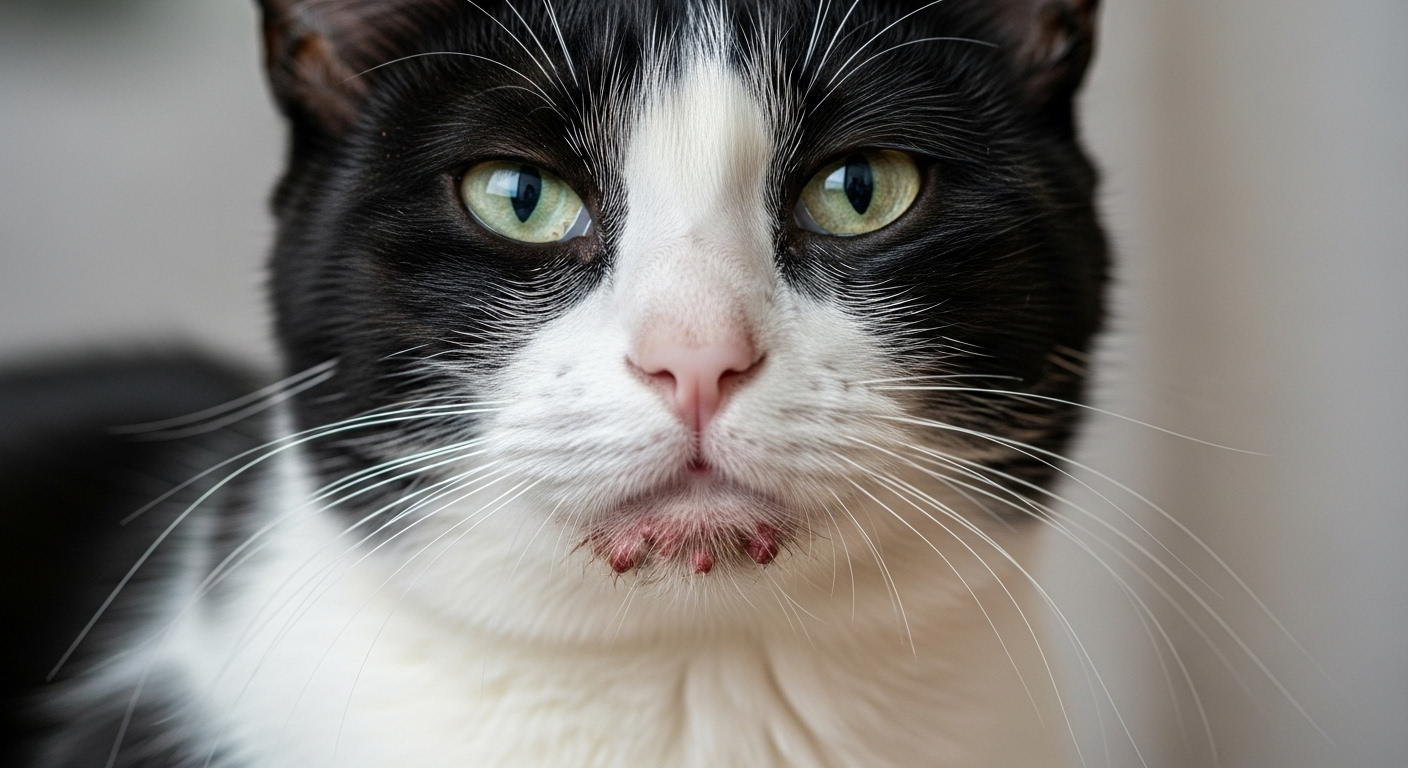
Check out our latest products
If you’ve noticed small, black spots on your cat’s chin that look like tiny blackheads, your feline friend might have feline acne. While this condition might sound concerning, it’s actually quite common and usually manageable with proper care.
What Is Feline Acne?
Feline acne is a skin condition that affects cats of all ages and breeds. It appears as small, dark spots or bumps, usually on the chin and sometimes around the lips. These spots look similar to blackheads that humans get. The medical term for these spots is “comedones.”
What Causes Feline Acne?
Several factors can lead to feline acne:
- Poor grooming habits – Some cats don’t clean their chins thoroughly after eating
- Stress – Anxious or stressed cats may develop skin problems
- Plastic food bowls – Bacteria can build up in scratches on plastic surfaces
- Hormonal changes – Young cats going through puberty often get acne
- Allergies – Food or environmental allergies can trigger skin issues
- Overactive oil glands – Just like in humans, some cats produce too much oil
Signs to Watch For
The most common signs of feline acne include:
- Small, dark spots on the chin (blackheads)
- Red, swollen bumps around the mouth area
- Crusty or scaly skin on the chin
- Your cat scratching or pawing at their face more than usual
- Hair loss around the affected area
In mild cases, you might only see a few small black spots. However, if left untreated, the condition can worsen and become painful for your cat.
Prevention Tips
You can help prevent feline acne with these simple steps:
- Switch to stainless steel or ceramic food bowls – These materials don’t harbor bacteria like plastic can
- Keep food bowls clean – Wash them daily with hot, soapy water
- Reduce stress – Provide a calm environment with hiding spots and regular routines
- Monitor your cat’s grooming – Some cats may need help cleaning their chin area
When to See Your Veterinarian
While mild feline acne often improves with better hygiene, you should contact your veterinarian if:
- The spots become red, swollen, or painful
- Your cat develops open sores or infections
- The condition spreads beyond the chin area
- Your cat seems uncomfortable or keeps scratching the area
- Home care doesn’t improve the condition after a few weeks
- Feline acne can also be the cause of bacterial pyoderma, which needs veterinary intervention.
Treatment Options
Your veterinarian may recommend various treatments depending on how severe the acne is. These might include special shampoos, topical medications, or changes to your cat’s environment and diet.
Remember, every cat is different, and what works for one may not work for another. Always consult with your veterinarian for a proper diagnosis and treatment plan tailored to your cat’s specific needs. With the right care, most cats with feline acne can live comfortably and happily.
Post Views: 140
Animal Wellness is North America’s top natural health and lifestyle magazine for dogs and cats, with a readership of over one million every year. AW features articles by some of the most renowned experts in the pet industry, with topics ranging from diet and health related issues, to articles on training, fitness and emotional well being.


![[PETHROOM] Cat Nail Clipper Trimmer for Indoor Cats with Circular Cut Hole (2mm) | Premium Sturdy Stainless Steel Blade Cat Claw | Safe, Easy, Accurate, Quiet & Fast | Avoid Overcutting](https://m.media-amazon.com/images/I/6156hi88deL._AC_SL1298_.jpg)
![[PETHROOM] Professional Eye Comb for Pets | Stainless Steel Tear Stain Remover for Cats & Dogs | Gentle Round-Head Grooming Tool | Compact & Portable for Eye Gunk Removal](https://m.media-amazon.com/images/I/71+W758uwXL._SL1500_.jpg)
![[petora] BRUSH ON ME Gentle Facial & Eye Comb for Dogs & Cats | Smooth & Stress-Free Tear Stain Remover | Fine-Tooth Grooming Tool with Rounded Tips | Comfortable Grip for Daily Pet Grooming](https://m.media-amazon.com/images/I/81hzVmjgV1L._SL1500_.jpg)









